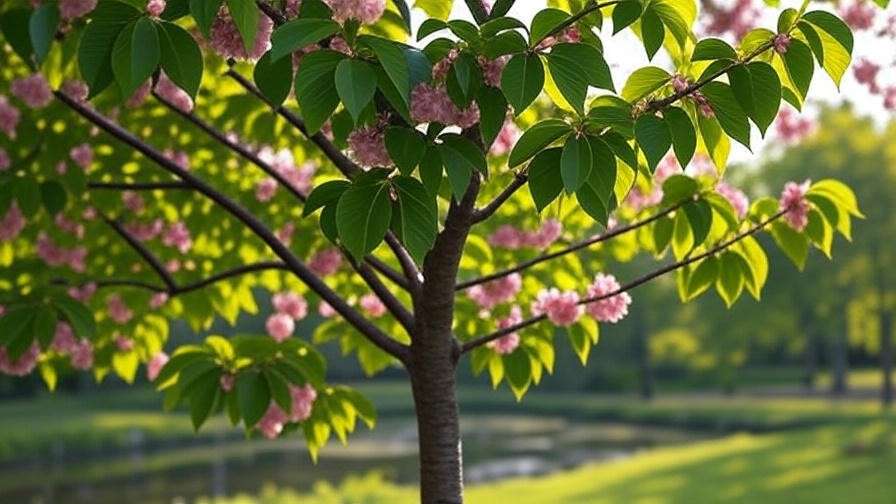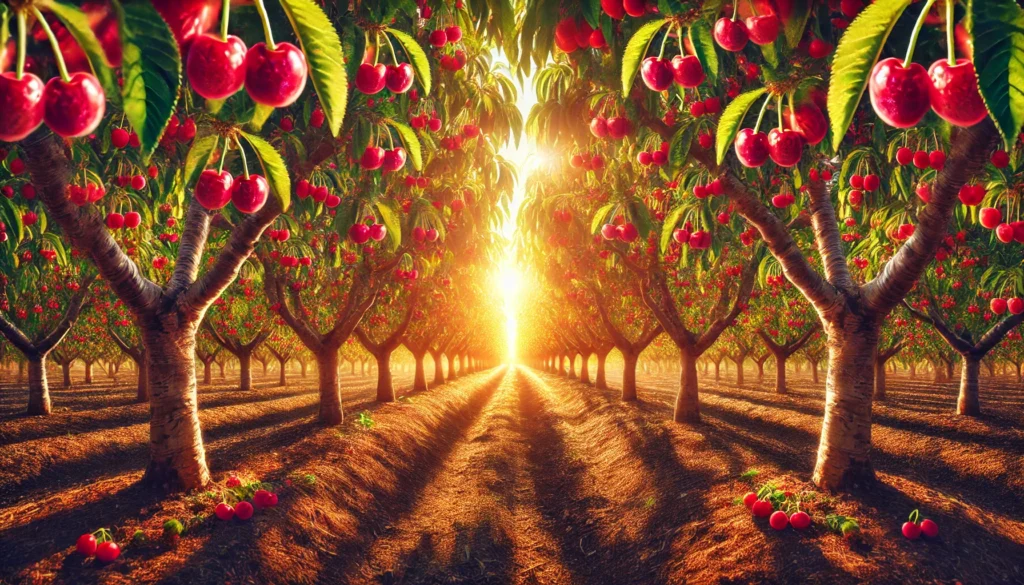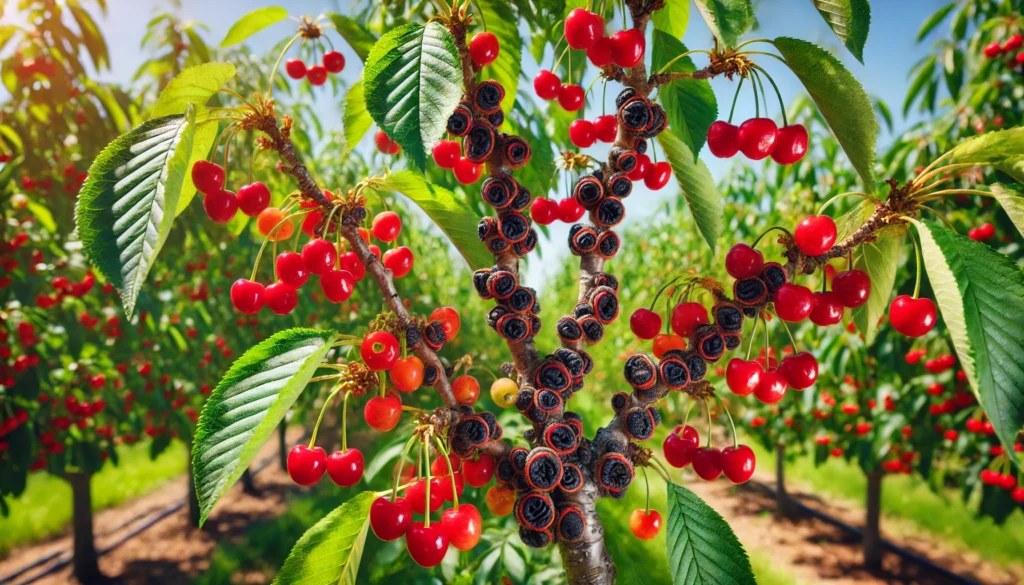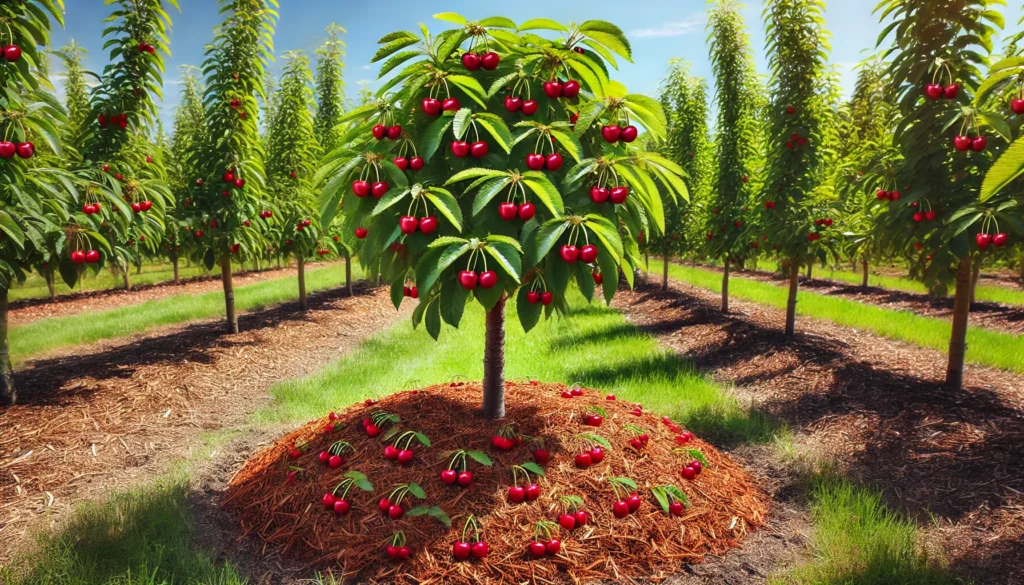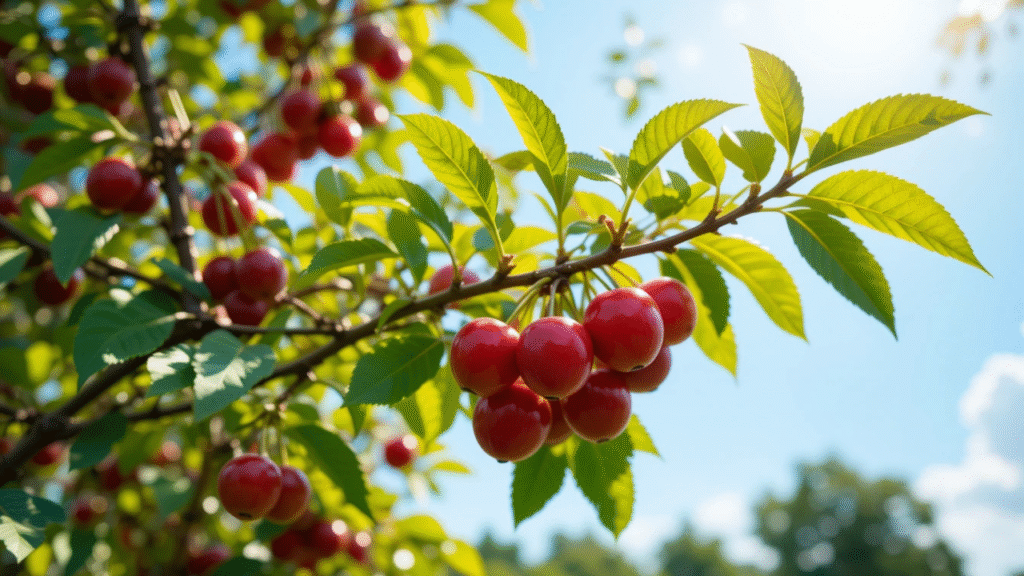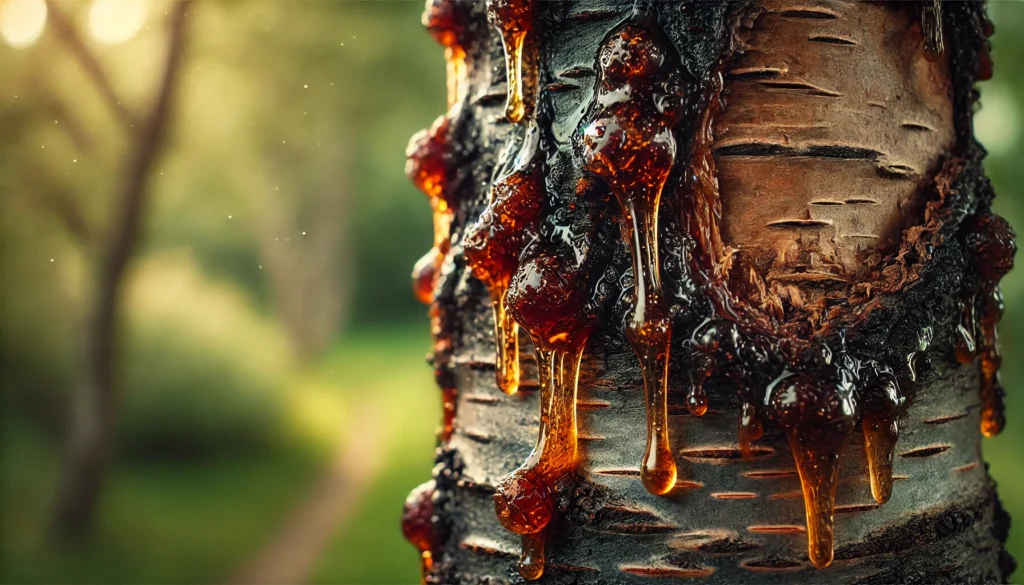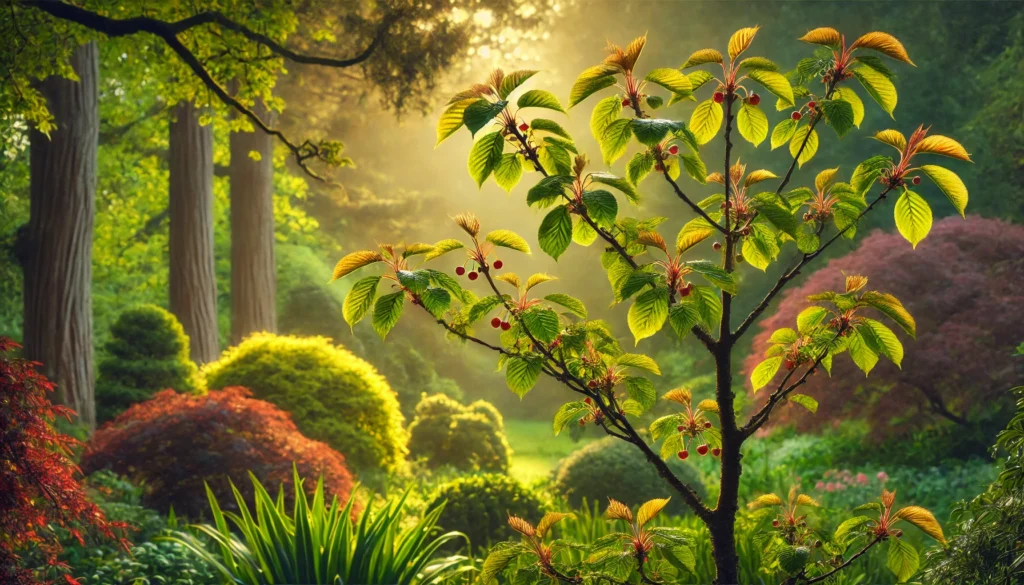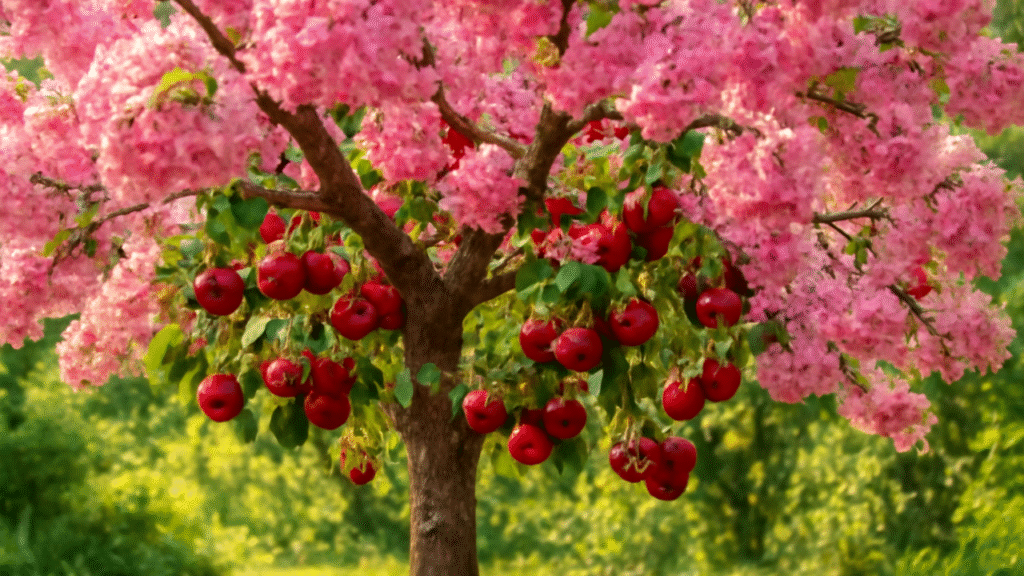Is your cherry tree losing its lush, green charm, with leaves turning an unsettling yellow? Don’t despair! Leaf yellowing is a common cry for help from cherry trees, often signaling nutrient deficiencies or environmental stress. In this comprehensive guide, we’ll dive into how to fix cherry tree leaf yellowing and other nutrient issues, empowering you to restore your tree’s vibrancy and ensure bountiful harvests. Backed by horticultural expertise and research-based solutions, this article offers actionable steps to diagnose, treat, and prevent nutrient problems, helping both novice gardeners and seasoned growers cultivate thriving cherry trees. Let’s get started! 🍒
Understanding Cherry Tree Leaf Yellowing: Causes and Symptoms 🍒
Why Are My Cherry Tree Leaves Turning Yellow? 🤔
Yellowing leaves, or chlorosis, are a telltale sign that your cherry tree is struggling. This condition can stem from various issues, including nutrient deficiencies, improper soil pH, water stress, or even pests and diseases. Left unaddressed, yellowing can weaken your tree, reduce fruit production, and even threaten its survival. Early diagnosis is key to reversing damage and restoring health. Common symptoms include pale or yellow leaves, stunted growth, and poor fruit quality. By identifying the root cause, you can take targeted steps to bring your tree back to life.
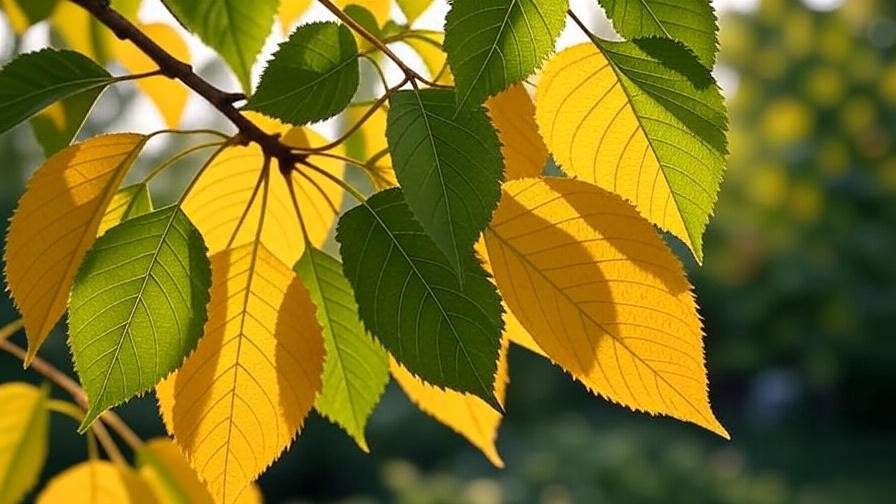
Key Nutrient Deficiencies in Cherry Trees 🧪
Nutrient deficiencies are a leading cause of leaf yellowing in cherry trees. Here’s a breakdown of the most common culprits:
- Nitrogen Deficiency: Older leaves turn yellow first, often accompanied by slow growth and small, pale fruit. Nitrogen is essential for leaf and stem development.
- Iron Deficiency: Young leaves show yellowing between veins (interveinal chlorosis), while veins remain green. This is common in alkaline soils.
- Magnesium Deficiency: Yellowing starts at leaf edges, progressing to interveinal areas. Magnesium supports photosynthesis and enzyme function.
- Potassium Deficiency: Leaves develop scorched or brown edges, and fruit may be small or poorly developed. Potassium aids in water regulation and disease resistance.
- Micronutrients (Zinc, Manganese): Zinc deficiency causes small, distorted leaves, while manganese issues lead to yellowing similar to iron deficiency.
Each nutrient plays a vital role in tree health, and deficiencies can compound, making accurate diagnosis critical.
Other Factors Contributing to Yellowing 🌦️
Beyond nutrients, several environmental factors can trigger leaf yellowing:
- Soil pH Imbalance: Cherry trees thrive in slightly acidic to neutral soil (pH 6.0–6.8). Alkaline soils (pH above 7.0) lock up nutrients like iron, making them unavailable to the tree.
- Water Stress: Overwatering or poor drainage can suffocate roots, while underwatering stresses the tree, both leading to yellowing.
- Environmental Stressors: Drought, extreme heat, cold snaps, or compacted soil can hinder nutrient uptake and cause chlorosis.
Expert Insight: Dr. Linda Chalker-Scott, a renowned horticulturist, notes, “Nutrient deficiencies in fruit trees like cherries often reflect soil imbalances rather than a lack of nutrients. Testing and correcting soil conditions are critical first steps.”
Diagnosing the Problem: How to Assess Your Cherry Tree’s Health 🔍
Visual Inspection Tips 👀
Start by closely examining your cherry tree to pinpoint symptoms. Here’s how:
- Check Leaves: Look for patterns of yellowing (older vs. younger leaves, edges vs. veins). Compare with deficiency symptoms listed above.
- Inspect Branches and Fruit: Weak, sparse growth or small, tasteless fruit can indicate nutrient issues.
- Examine Roots: Gently dig around the base to check for waterlogged or compacted soil.
- Look for Pests or Disease: Sticky residue, webbing, or leaf spots may suggest pests or fungal issues rather than nutrient problems.
Tools like a magnifying glass, soil pH tester, and moisture meter can help refine your observations.
Soil Testing for Nutrient Levels and pH 🌱
Soil testing is the gold standard for diagnosing nutrient deficiencies. Follow these steps:
- Collect a Sample: Gather soil from 6–12 inches deep near the tree’s drip line (where rainwater falls from the canopy). Mix samples from multiple spots for accuracy.
- Test at Home or Lab: Use a home soil test kit for quick results or send samples to a local agricultural extension service for detailed analysis.
- Interpret Results: Look for nutrient levels (nitrogen, phosphorus, potassium, etc.) and pH. Cherry trees prefer a pH of 6.0–6.8 for optimal nutrient uptake.
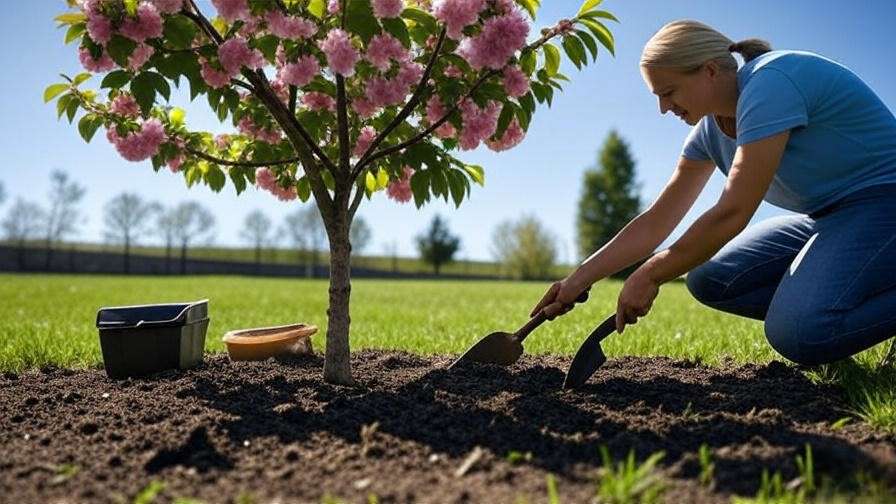
A comprehensive soil test reveals deficiencies and guides precise treatments, saving time and resources.
When to Consult a Professional 🩺
If symptoms persist despite your efforts or you suspect disease (e.g., leaf spots, cankers), consult a certified arborist or extension service. Severe decline, such as widespread dieback or oozing sap, warrants professional intervention. Find experts through your local cooperative extension or the International Society of Arboriculture (ISA).
Tip: Keep a journal of your tree’s symptoms, care practices, and environmental conditions to share with professionals or track progress.
Proven Solutions to Fix Cherry Tree Leaf Yellowing 🌿
Correcting Nutrient Deficiencies 💪
Once you’ve identified the deficiency, apply targeted treatments:
- Nitrogen: Use a balanced fertilizer like ammonium sulfate (21-0-0) or a slow-release 10-10-10 formula. Apply in early spring, spreading 1–2 pounds per tree around the drip line. Water thoroughly to aid absorption.
- Iron: Apply chelated iron (iron chelate) as a foliar spray for quick results or as a soil drench for long-term correction. Follow product instructions to avoid leaf burn.
- Magnesium: Dissolve 1–2 tablespoons of Epsom salt (magnesium sulfate) per gallon of water and apply as a foliar spray or soil drench monthly during the growing season.
- Potassium: Use potassium sulfate or potash (0-0-50) at 1–2 pounds per tree, applied in late winter or early spring.
- Micronutrients: Use a micronutrient blend (containing zinc, manganese, etc.) sparingly, as over-application can harm roots.
Always follow label instructions and avoid over-fertilizing, which can burn roots and exacerbate issues.
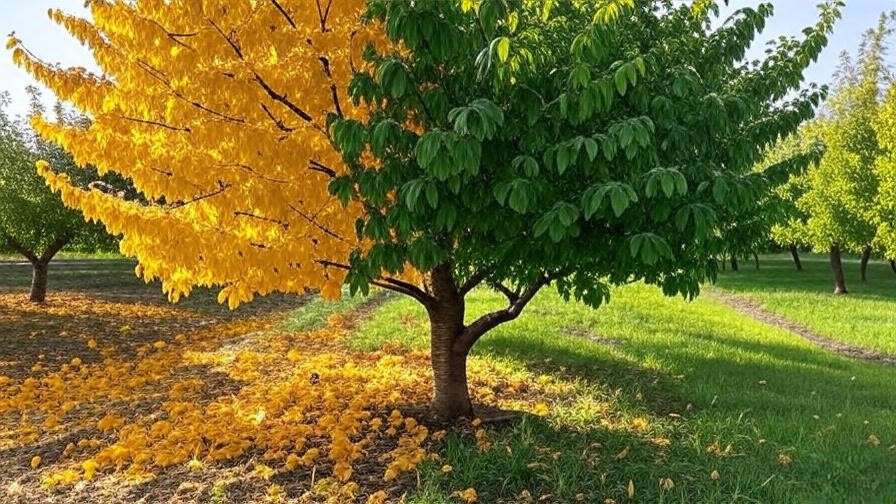
Adjusting Soil pH for Optimal Nutrient Uptake ⚖️
If soil pH is too high or low, nutrients become unavailable, even if present. To correct:
- Lowering pH (for alkaline soils): Apply elemental sulfur or iron sulfate at 1–2 pounds per 100 square feet. Work into the soil and water well. Retest pH after 4–6 weeks, as changes take time.
- Raising pH (for acidic soils): Use agricultural lime (calcium carbonate) at 2–4 pounds per 100 square feet. Apply in fall for best results.
- Monitoring: Retest soil pH every 6 months until it stabilizes in the 6.0–6.8 range.
Example: Jane, a home gardener in Oregon, noticed her cherry tree’s leaves yellowing. A soil test revealed a pH of 7.8 and low iron. She applied chelated iron and sulfur, retested after two months, and saw vibrant green leaves by the next season.
Improving Watering and Drainage 💧
Watering issues often exacerbate nutrient deficiencies. Here’s how to optimize:
- Watering Techniques: Water deeply but infrequently (1–2 inches per week), focusing on the drip line. Use a soaker hose or drip irrigation for even distribution.
- Fixing Poor Drainage: For waterlogged soils, install a French drain or create a raised bed. Aerate compacted soil with a garden fork.
- Signs to Watch: Overwatered trees show soggy soil and yellowing roots, while underwatered trees have dry, cracked soil and drooping leaves.
Proper hydration ensures nutrients reach the tree’s roots effectively.
Preventing Future Nutrient Issues: Long-Term Care Tips 🌞
Building Healthy Soil for Cherry Trees 🏞️
Healthy soil is the foundation of a thriving cherry tree. Nutrient-rich, well-draining soil prevents deficiencies and supports robust growth. Here’s how to build and maintain it:
- Add Organic Matter: Incorporate 2–3 inches of compost or well-rotted manure annually around the tree’s drip line. This boosts nutrient levels and improves soil structure.
- Mulch Effectively: Apply a 2–4 inch layer of organic mulch (e.g., wood chips, bark, or straw) to retain moisture, regulate soil temperature, and suppress weeds. Keep mulch 6 inches away from the trunk to prevent rot.
- Use Cover Crops: Plant nitrogen-fixing cover crops like clover or vetch in the off-season to enrich soil. Till them into the soil before they seed to release nutrients.
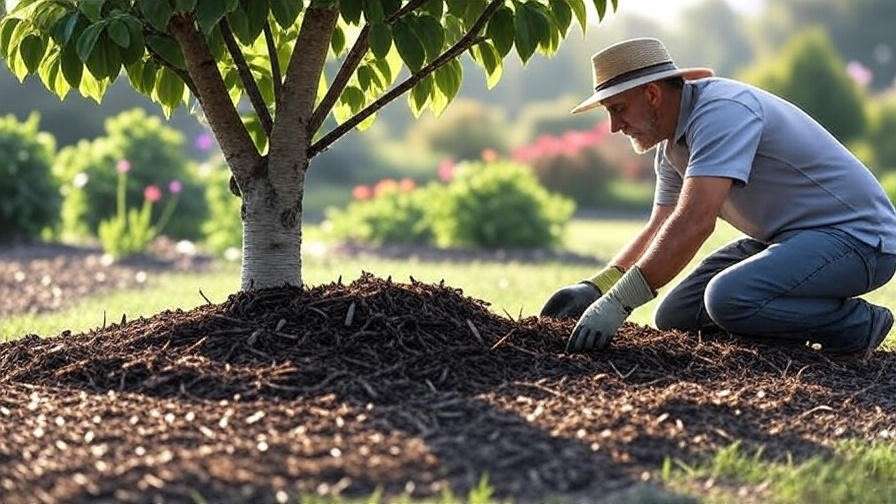
Regular soil enrichment reduces the risk of deficiencies and promotes long-term tree health.
Regular Maintenance and Monitoring 📅
Consistent care prevents nutrient issues from recurring. Follow this seasonal checklist:
- Spring: Apply balanced fertilizer (e.g., 10-10-10) and check for pest activity. Prune dead or damaged branches to improve airflow.
- Summer: Monitor soil moisture and water deeply during dry spells. Inspect leaves for early signs of yellowing or pests.
- Fall: Test soil pH and nutrient levels. Apply lime or sulfur if needed to adjust pH for the next season.
- Winter: Mulch to protect roots from freezing and plan for spring fertilization.
Annual soil tests and visual inspections catch problems early, saving time and effort.
Choosing the Right Cherry Tree Variety 🌸
Some cherry tree varieties are more resilient to nutrient issues and better suited to specific climates or soils. Consider these options:
- ‘Stella’: A self-pollinating sweet cherry with good disease resistance, ideal for smaller gardens.
- ‘Lapins’: Known for heavy yields and tolerance to varied soil conditions.
- ‘Montmorency’: A tart cherry variety that thrives in slightly acidic soils and resists nutrient stress.
Match your tree to your region’s climate and soil type. For example, in alkaline soils, choose varieties with lower iron requirements. Source trees from reputable nurseries to ensure healthy stock.
Expert Insight: Arborist John Smith advises, “Selecting a cherry tree variety suited to your local conditions is half the battle. Pair that with proactive soil care, and you’ll minimize nutrient issues significantly.”
Common Mistakes to Avoid When Treating Yellowing Leaves 🚫
Even well-meaning gardeners can make errors that worsen leaf yellowing. Avoid these pitfalls:
- Over-Fertilizing: Applying too much fertilizer can burn roots and lock up nutrients. Always measure and follow product guidelines.
- Ignoring Soil p “‘H”: Fertilizers won’t help if pH prevents nutrient uptake. Test and adjust pH before fertilizing.
- Misdiagnosing Symptoms: Yellowing from pests (e.g., aphids) or diseases (e.g., leaf spot) mimics nutrient deficiencies. Rule out other causes through careful inspection.
- Neglecting Root Health: Compacted or waterlogged roots impair nutrient absorption. Aerate soil and improve drainage to support roots.
Tip: Start with small, incremental treatments and monitor results over 2–4 weeks to avoid overwhelming your tree.
FAQs About Cherry Tree Leaf Yellowing ❓
Q1: Can yellow leaves on a cherry tree turn green again?
A: If addressed early, yellow leaves may regain some green color, especially with iron or magnesium treatments. However, severely damaged leaves often fall, and new growth reflects improved health.
Q2: How long does it take to fix nutrient deficiencies in cherry trees?
A: Foliar sprays (e.g., iron chelate) show results in 1–2 weeks, while soil amendments (e.g., sulfur) may take 4–8 weeks. Consistent care ensures lasting improvement.
Q3: Are organic fertilizers effective for cherry trees?
A: Yes, organic options like compost, fish emulsion, or bone meal provide slow-release nutrients. Combine with soil testing to ensure balanced application.
Q4: What should I do if my cherry tree’s leaves are yellowing and dropping?
A: Check for overwatering, nutrient deficiencies, or pests. Test soil, adjust watering, and apply targeted fertilizers. Consult an arborist if dropping persists.
Q5: Can pests cause leaf yellowing, and how do I check for them?
A: Pests like aphids or spider mites can cause yellowing. Inspect leaf undersides with a magnifying glass for insects, webbing, or sticky residue. Treat with neem oil if pests are present.
Conclusion: Restoring Your Cherry Tree to Vibrant Health 🌟
Yellowing leaves on your cherry tree don’t have to spell disaster. By diagnosing the cause—whether nutrient deficiencies, improper pH, or watering issues—and applying targeted solutions, you can revive your tree’s lush foliage and ensure bountiful harvests. Regular soil testing, proper fertilization, and proactive care are your keys to success. Start today by inspecting your tree, testing your soil, and following the steps outlined in this guide. Your cherry tree will reward you with vibrant growth and delicious fruit! 🍒
Call-to-Action: Share your cherry tree care journey in the comments or reach out to your local extension service for tailored advice. Download our free “Cherry Tree Health Checklist” to track your progress and keep your tree thriving!

